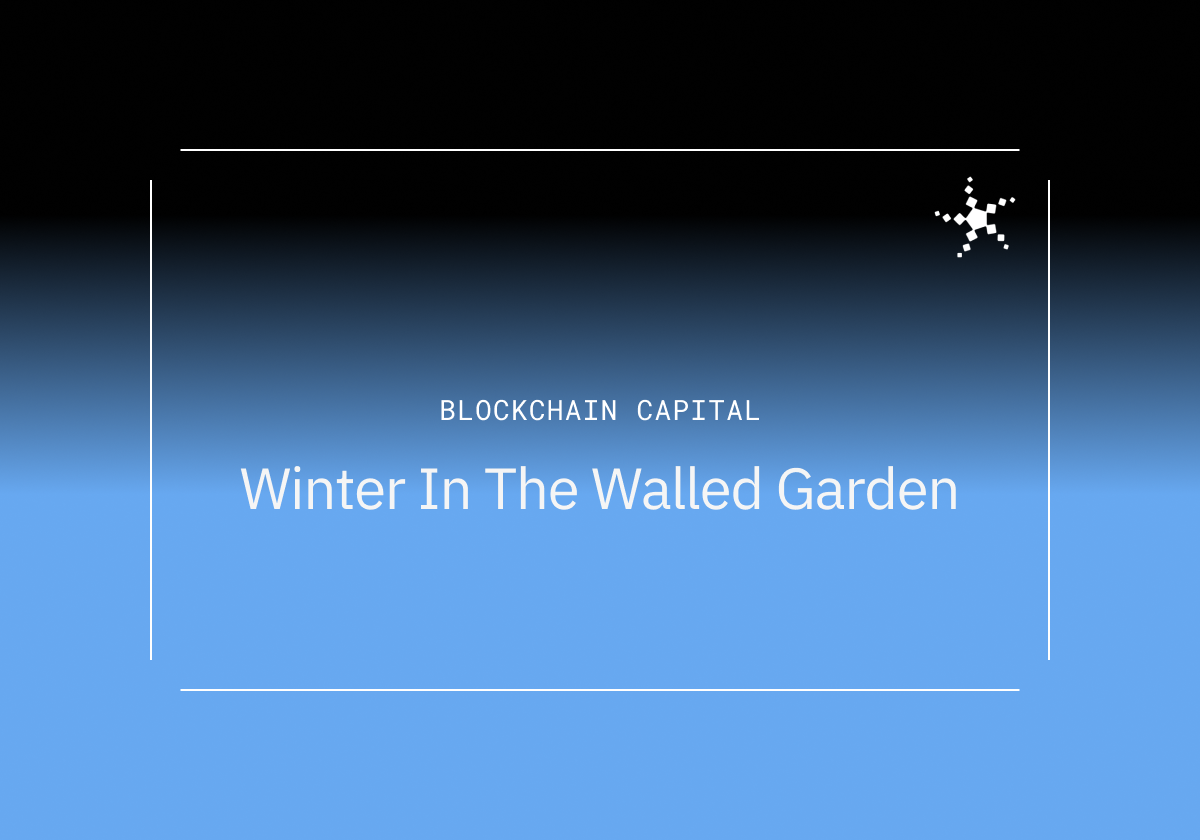
Case Study in Assessing Long-Term Value of Digital Assets
In our previous article, we referenced the critical importance of robust economic institutions and clear legal frameworks in fostering sustainable economic growth. Building on this foundation, we explained how tokens are dynamic, programmable assets that facilitate access, trust, and value exchange. Tokens serve as innovative coordination mechanisms in digital economies that powerfully align stakeholder interests.
Distinct from traditional legal mechanisms, blockchains orchestrate behavior through two interdependent factors: tokenomic models and network utility.
Tokenomics combines economic principles, incentive structures, and governance mechanisms to manage a token's supply, demand, and distribution. Network utility refers to the token’s practical applications and value creation capacity within the protocol. By examining these elements together, investors can identify projects likely to drive lasting change and generate sustainable value.
Of course, investing is the art of balancing long-term value accrual with current market dynamics. Successfully navigating this landscape requires a robust, enduring framework capable of distinguishing between fleeting market sentiment and sustainable value.
To illustrate these concepts in practice, let’s explore a case study on Uniswap, a prominent decentralized exchange (DEX).
Uniswap is unique because it integrates the market-making function directly into the protocol. Liquidity Providers (LPs) deposit token pairs, such as ETH and USDC, into liquidity pools and set their preferred trade prices. This design ensures continuous liquidity, eliminating the need for traditional order books. When a trade occurs, the fees are distributed proportionally to all LPs in the pool.
Uniswap’s two-token model includes liquidity tokens1 and UNI tokens. Liquidity tokens provide protocol utility by transferring all trading revenue to LPs. UNI tokens, on the other hand, enable protocol governance, guiding tokenomics.
Currently, UNI holders receive no trading revenue. Like many growth stage businesses, UNI holders have prioritized accelerating expansion and solidifying market position rather than distributing profits.
This model is comparable to Airbnb’s early business structure. Initially, Airbnb had two main participants: home renters (demand) and homeowners (suppliers). Homeowners provided inventory and were compensated for their services, similar to how LPs receive trading revenue. Meanwhile, Airbnb’s equity holders, akin to UNI token holders, mainly handled governance.
As Airbnb achieved network effects and growth stabilized, it began generating substantial profits, benefiting both homeowners and equity holders. Similarly, once Uniswap reaches steady-state growth, UNI holders may decide to redirect some protocol fees to themselves, capturing more value from the platform’s activities.
Providing tangible returns through fee distributions may increase governance participation, further aligning their incentives with the protocol's success and enhancing network stability. Additionally, the added financial utility would likely lead investors to reevaluate UNI based on expected yields, attracting income-seeking investors and potentially increasing demand and price stability.
This shift necessitates a detailed analysis to accurately assess the token's intrinsic value under such a hypothetical new revenue structure.
In early 2024, Uniswap’s average daily trading volume (ADV) was $2B, generating approximately $6.6M daily gross operating revenue, or $2.2B2 annualized. Now, let’s run a discounted cash flow (DCF) model under the following assumptions:

A note on this model5: It's vital to understand models like CAPM and DCF rely on assumptions that may not fully capture the unique traits of cryptocurrencies. We recognize that picking specific numbers is rarely the best approach for robust financial analysis. Instead, using a range presented in a sensitivity table would be most instructive. However, for our purposes, we will proceed with specific, internally developed assumptions for illustrative purposes.
We also acknowledge that reasonable critics might debate our 20% discount rate, arguing it fails to reflect the true risk premium of volatile assets like UNI. They would likely argue that, due to high volatility and uncertain regulations, a higher rate would better account for these risks. Admittedly, these arguments are not without merit.
As a counterpoint, the asset management landscape is evolving. The tokenization of financial assets has transformative potential, suggesting a shift towards digital assets and decentralized finance, where permissionless platforms like Uniswap could thrive. Indeed, the ratio of DEX to CEX (centralized exchange) volume continues to rise.
Additionally, Uniswap benefits from network effects, where each additional user and developer enhances the platform's value. This creates a flywheel effect: more users attract more liquidity providers, increasing liquidity. Greater liquidity attracts more traders, driving volume and reducing slippage. This, in turn, draws more users and developers, driving innovation and further enhancing the platform.
Again, Uniswap's unique tokenomics and network utility amplify these effects, ensuring that as usage grows so does the platform's overall utility and value.
Finally, emerging regulatory clarity in the US will encourage more institutional investment, boosting growth.
In sum, considering tokenization's potential, emerging regulatory clarity, and the evolving landscape of traditional assets, the future for Uniswap and similar protocols appears promising. This warrants a closer, more nuanced examination of their value. So let’s dive in.
For UNI, our model generated a discounted terminal value (DTV) of $12.2B, compared to a current market capitalization of roughly $8B. This indicates UNI may be undervalued, likely because fees are not turned on, reflecting the risk and timeline until those cash flows occur. Based on the current circulating token supply, UNI's earnings per token is roughly $0.50 and price-to-earnings around 20x.
For context, let’s compare this to Coinbase.
In Q1 2024, Coinbase achieved $11.8M6 ADV and generated $860M enterprise-wide free cash flow, with roughly two-thirds driven by exchange fees (down from over 80% in Q1 2022).
Compared to Uniswap, Coinbase’s relative maturity and growing diversity of revenue streams justify lower discount rates and growth assumptions. Specifically, let’s use a discount rate of 16.5%, a growth period of seven (7) years, and a growth rate of 25%. Given these values, Coinbase’s DTV is approximately $14.9B.
This suggests the market has placed a substantial premium on COIN, when compared to Coinbase’s $60B current market capitalization. At current prices of $240/share, Coinbase’s EPS is $4.40 with a P/E approaching 50x.
The divergent valuations of Uniswap and Coinbase underscore the intricate dynamics of assessing the long-term value of digital assets. Despite Uniswap's innovative tokenomics and strong network utility, Coinbase's shares command a substantial premium.
This discrepancy likely reflects several factors: Coinbase’s brand recognition, strong management team, effective execution, diversified business lines, and continued growth of new revenue streams. Additionally, as equity, COIN is more easily accessed by traditional investors seeking growth from exposure to digital asset beta.
While this analysis centers on Uniswap, countless other protocols generate operating revenue, theoretically enabling cash flow to token holders. Regulatory clarity is paramount, as even the most decentralized projects today face the looming specter of regulatory overreach. With fair regulation, these innovative financial mechanisms can reach their full potential.
In summary, valuing digital assets requires a comprehensive approach that considers tokenomics, network utility, and traditional fundamental analysis. Investment decisions should prioritize value accrual and governance rights over speculation.
As regulatory clarity improves, the valuation gap between equities and tokens is likely to narrow, as both represent a stake in a company or protocol’s future success. Savvy investors who recognize this potential and prioritize projects with strong tokenomics, robust network utility, and solid fundamentals will be well-positioned to leverage the transformative power of programmable assets. By embracing this new paradigm and focusing on the intrinsic qualities of tokens, investors can uncover opportunities that promise lasting change and sustainable value in the evolving digital asset landscape.
Discounted cash flow model7

1Uniswap V3, when introduced in 2021, implemented NFTs instead of liquidity tokens. This was primarily to provide greater flexibility and specificity required for the new model of concentrated liquidity, ensuring each position's unique characteristics are accurately represented and managed.
2Here, we apply Uniswap’s legacy fee schedule of 0.30% for all transactions, despite Uniswap v3’s introduction of variable fee tiers of 0.05%, 0.30%, and 1.00%, depending on the liquidity pool. This article provides an illustrative example rather than a detailed financial analysis of the fee schedules and business model. The complexity and variability of fees across platforms necessitate a more comprehensive examination beyond the scope of this discussion.
3Approximate UNI Market Capitalization and FDV: As of May 28, 2024 https://www.coingecko.com/en/coins/uniswap
4Figures assume UNI holders vote to receive 0.05% (5bps), or roughly $1.1M daily, of Uniswap's protocol revenue.
5For another example, though dated, see https://medium.datadriveninvestor.com/fundamentally-valuing-uniswap-3dbe991bd398.
6Coinbase reports $1,076,741,000 in transaction fee revenue during the 91 days of 1Q24.
7All inputs and assumptions developed through internal research and analysis.
Blockchain Capital is an investor in one or more of the protocols mentioned above. The views expressed in each blog post may be the personal views of each author and do not necessarily reflect the views of Blockchain Capital and its affiliates. Neither Blockchain Capital nor the author guarantees the accuracy, adequacy or completeness of information provided in each blog post. No representation or warranty, express or implied, is made or given by or on behalf of Blockchain Capital, the author or any other person as to the accuracy and completeness or fairness of the information contained in any blog post and no responsibility or liability is accepted for any such information. Nothing contained in each blog post constitutes investment, regulatory, legal, compliance or tax or other advice nor is it to be relied on in making an investment decision. Blog posts should not be viewed as current or past recommendations or solicitations of an offer to buy or sell any securities or to adopt any investment strategy. The blog posts may contain projections or other forward-looking statements, which are based on beliefs, assumptions and expectations that may change as a result of many possible events or factors. If a change occurs, actual results may vary materially from those expressed in the forward-looking statements. All forward-looking statements speak only as of the date such statements are made, and neither Blockchain Capital nor each author assumes any duty to update such statements except as required by law. To the extent that any documents, presentations or other materials produced, published or otherwise distributed by Blockchain Capital are referenced in any blog post, such materials should be read with careful attention to any disclaimers provided therein.
This material is intended for illustrative purposes only and is not intended as a recommendation or solicitation to buy, or an offer to sell, any particular security or investment strategy. The information shown should not be used as the sole basis for making investment decisions. There can be no guarantee that any forecast or projections will be realized or attained. Past performance is not necessarily indicative of future results.
This material is based on information obtained from sources that Blockchain Capital considers to be reliable; however, Blockchain Capital makes no representation as to, and accepts no responsibility or liability for, the accuracy, fairness or completeness of the information. Blockchain Capital is not and does not purport to be an adviser as to legal, taxation, accounting, financial, or regulatory matters in any jurisdiction.
Statements contained in this document that are not historical facts reflect our opinion, beliefs, estimates, projections, and/or current expectations regarding future events. Such statements involve known and unknown risks, uncertainties and other factors, and undue reliance should not be placed on them. Various risks and uncertainties may cause actual events to differ materially from current expectations.
No Results Found.








.jpg)



.png)
.png)
